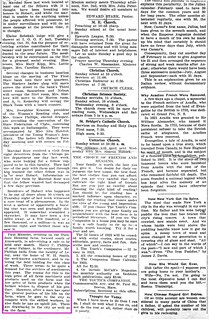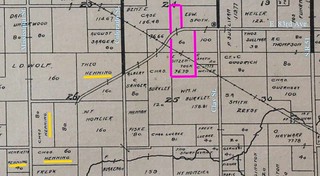
(Click on image to enlarge)
Hobart News 26 Oct. 1922.
In a previous post I identified the Theodore Henning farm:

(Click on image to enlarge)
It lay on the west side of the intersection of Colorado Street and Harms Road.
This is the first I've heard of Paul Mionske, but he may have occupied the Henning farm when the 1920 Census came around; he appears on rented land (with his parents) in that vicinity. I've a feeling this will be the last I hear of him.
Theodore Henning was born in Germany in 1855, came to the U.S. in 1871, and married Wilhelmine "Minnie" Mau in Chicago in 1884. They bought their Ross Township farm sometime between 1891 and 1900: the 1900 Census shows them there with seven children (Charles, Frank, Amanda, Albert, William, Fred, and Lillian). Theodore died in 1916, at which time he and Minnie were Crown Point residents. The old farm was being operated by their son, Albert, who in 1912 had married Florence Gradle.1 (Two of their children, Theodore and Delmer, were photographed at the Vincent School.) In January 1917, Albert himself held a public sale on the farm2 and apparently got out of farming — the 1920 Census shows him in Gary, employed at a steel mill — but he held on to the land, renting it out. Which is where Paul Mionske comes in, and goes out.
_______________________
[1] "Local Drifts," Hobart Gazette 7 June 1912.
[2] "Public Sale," Hobart Gazette 12 Jan. 1917.


No comments:
Post a Comment